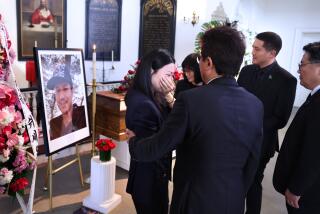Trying to Prevent Tragedies
- Share via
A mentally disturbed person with only the thinnest streak of violence can produce disaster any time, any place.
Bullets sprayed among children at play on the 49th Street Elementary School playground a year ago when Tyrone Mitchell opened fire from a house across the street. Mitchell, who had a history of mental problems, wounded 12 people and killed one little girl, an adult passerby and himself. It happened again when a gunman opened fire in a fast-food restaurant in San Ysidro, and again when a motorist ran down pedestrians on Westwood Boulevard near UCLA.
Los Angeles Police Department officials hope to prevent at least some tragedies like these in the future with the help of a new program that identifies and keeps better track of disturbed persons. By recognizing mentally ill offenders before they explode, officers can divert them from jail to treatment and prevent some seemingly harmless situations from escalating into murder.
Under the program the Los Angeles County Mental Health Department would assign experts to the busiest police stations to help officers in the field identify and handle troubled individuals. The Police Department would expand its own mental-health unit and operate it on a 24-hour basis. A new computer system would be used to keep tabs on mentally ill offenders, and a telephone service would indicate what mental-health services are available at any given time.
Increasing the number of mental-health specialists on duty with police around the clock and starting the computer tracing system would cost $600,000 and require approval from the Los Angeles Police Commission and the City Council. As we see it, the commission and the council will be voting not on a budget but on the lives of innocent bystanders.
The program--devised by a committee that included police and officials from the county’s mental-health and health-services departments, the offices of the city attorney and the district attorney and the Fire Department--would provide help for those who need it. It would also provide more protection for the public.
If the new program had been in effect when the police were called to investigate a family dispute involving Tyrone Mitchell long before he opened fire on the schoolyard, he might have been held for evaluation by a mental-health worker on duty at the police station or by a county mental-health team. If that evaluation had determined that Mitchell was violent, he could have been committed for psychiatric treatment. If he had been found mentally ill but no threat to people around him, he could have received other help. He might have been saved, and his victims spared.
What came of that tragedy was the search for better ways to curb violence, and an intriguing program that may do just that. It must be tried.
More to Read
Sign up for Essential California
The most important California stories and recommendations in your inbox every morning.
You may occasionally receive promotional content from the Los Angeles Times.













